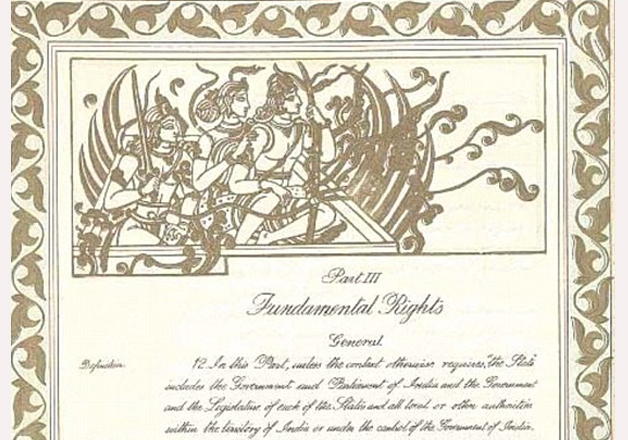The Constitution of India is the supreme law of India laying down the framework that demarcates the structure, procedures, powers, and duties of the governing institutions and sets out fundamental rights, directive principles, and the duties of citizens.
Salient features of the Constitution –
The Constitution of India has the majority of provisions taken from the Government of India act 1935. India, also known as Bharat, is a Union of States. It is a Sovereign Socialist Secular Democratic Republic with a parliamentary system of government. The Constitution provides for a Parliamentary form of government which is federal in structure with certain unitary features. The constitutional head of the Executive of the Union is the President. The Constitution provides a Parliament of the Union consisting of the President and two Houses known as the Council of States (Rajya Sabha) and the House of the People (Lok Sabha). The Constitution provides that there shall be a Council of Ministers with the Prime Minister as its head to aid and advise the President, who shall exercise his/her functions in accordance with the advice. The real executive power is thus vested in the Council of Ministers headed by the Prime Minister.
The constitution declares India a sovereign, socialist, secular, and democratic republic, assuring its citizens justice, equality and liberty, and endeavours to promote fraternity. The original Constitution had 395 articles in 22 parts and 8 schedules. Till now it has been amended 127 times till 15th August 2021.
Making of the Constitution –
The first meeting of the Constituent Assembly was held on 6th December 1946 and on 9th December 1946 Sachidanand Sinha became temporary President of the Assembly. The Constitution was adopted by the Constituent Assembly of India on 26 November 1949 and became effective on 26 January 1950, making the Dominion of India the Republic of India. The Assembly appointed Rajendra Prasad as its president, H. C. Mukherjee as its vice-chairman and a civil servant B. N. Rau as constitutional legal advisor. Later B.N. Rau prepared the First Draft of the Constitution.
In Constituent Assembly, on 25 November 1949, Dr, Bhim Rao Ambedkar stated in his speech that,
“The credit that is given to me does not really belong to me. It belongs partly to Sir B.N. Rau the Constitutional Advisor to the Constituent Assembly who prepared a rough draft of the Constitution for the consideration of Drafting Committee.”
The original constitution is hand-written by a calligrapher Prem Behari Narain Raizada. Each page of the original version of the Constitution is decorated by the work of artists from Shantiniketan including Beohar Rammanohar Sinha and Nandalal Bose.
